


























In an ever-changing, breaking-news environment, it can be hard to keep up with the real estate market. The good news is that we’re here to make sense of it all.
In the pages ahead, we explore the luxury market’s highs and lows, looking at which areas around the world are buyer’s markets, which are seller’s markets, and which are moving in one direction or the other. In general, we’ve found prices in the luxury and ultra-luxury sector remain high though buyers are getting a slight respite from heavy competition (and domestic buyers are seeing an opening).
In terms of those most dedicated to buying high-end real estate, members of Generation X—now at the height of their earning power—are continuing to invest in homes to mitigate stock market ups and downs, seeing them as a safer long-term bet. Plus, many are getting into the pure investment game, choosing to rent their properties out, especially in popular resort communities.
Amid changes to the climate and extreme weather events, high-end buyers are taking matters into their own hands to prepare for risk. These often pricey endeavors are increasingly necessary in coastal areas such as North Carolina and California. Another trend that’s arisen is self-insuring, an approach that’s becoming more common as insurance prices skyrocket and the big insurance companies prepare for a new normal.
We also explore what makes a suburb truly ideal (think outdoor space, retail attractions, and a certain sweet-spot commute), plus the home amenity and design trends appealing to the most discerning homeowners and buyers right now (and you better believe pickleball is in there!).
Throughout the report, we take closer looks at the draws—and forecasts—in locations around the world where we’re seeing growth among the upper echelon. From London to Utah and Detroit to the Caribbean, there are lots of areas worth checking out.
We hope you enjoy this year’s Global Luxury Landscape Report.




In the pages ahead, we explore the luxury market’s highs and lows, looking at which areas around the world are buyer’s markets, which are seller’s markets, and which are moving in one direction or the other.





Vince Leisey President Berkshire Hathaway HomeServices
















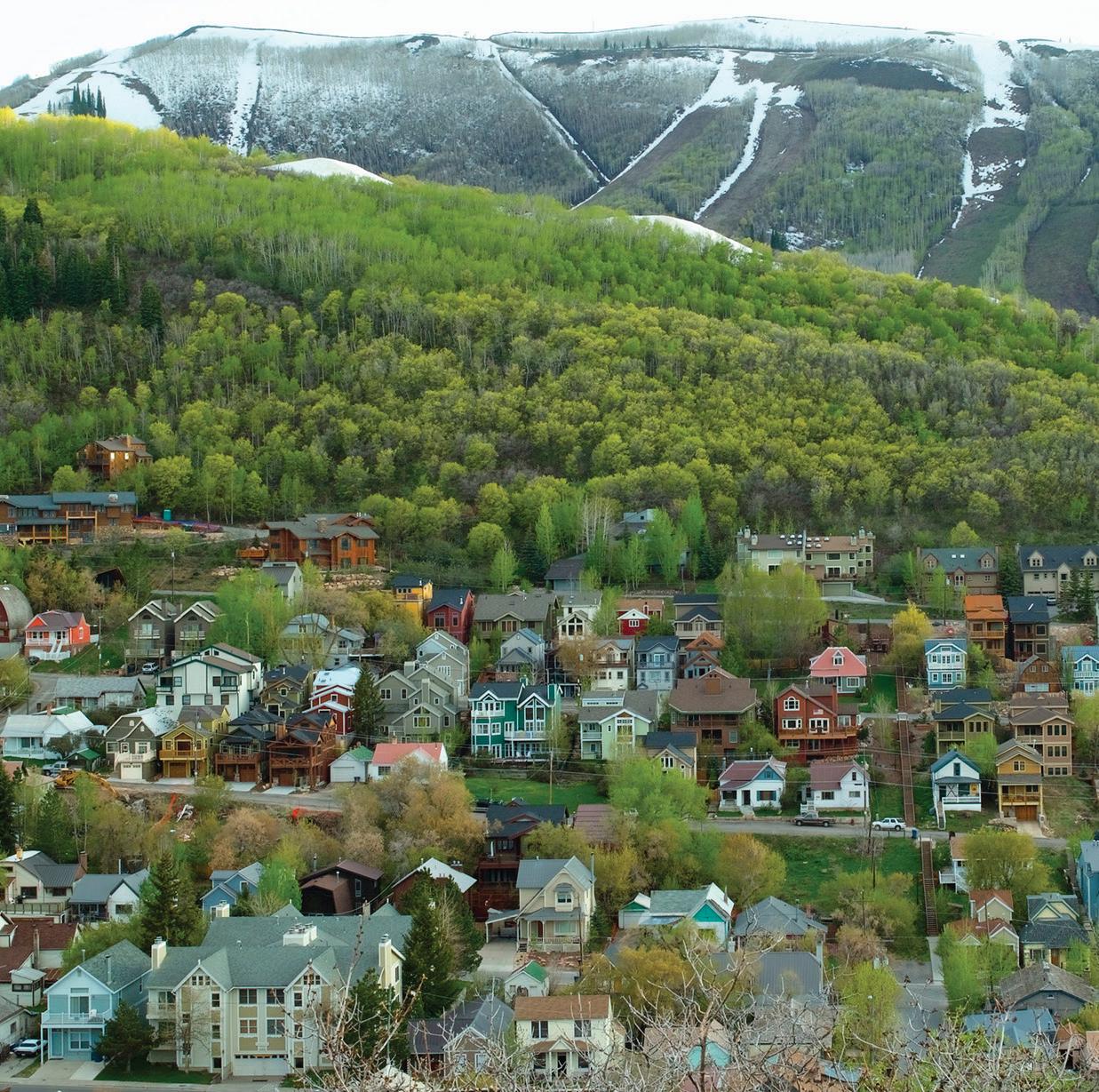
Across the U.S., luxury property prices remain high amid growing inventory and economic uncertainty
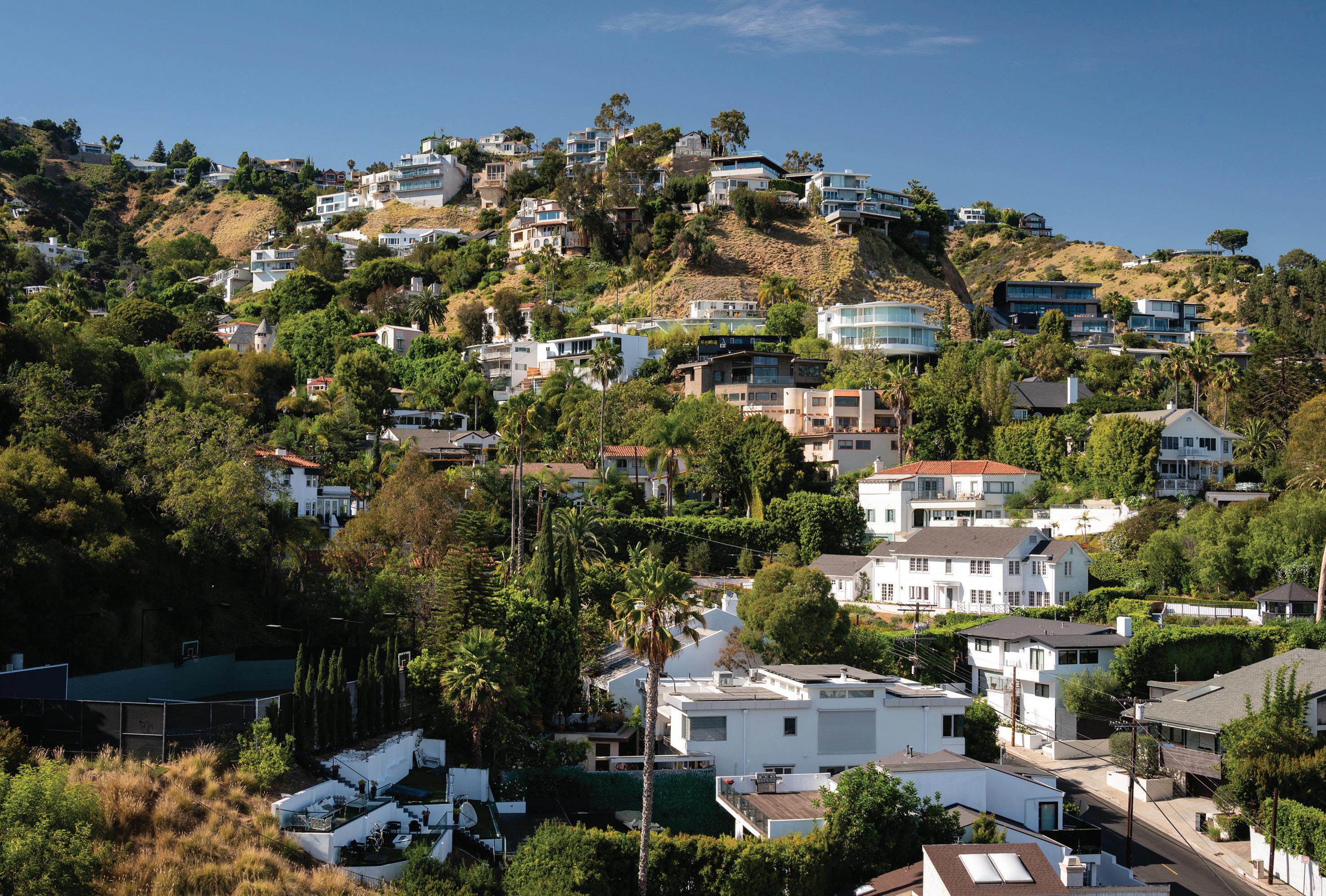
Every market has its highs and lows. So far in 2025, prices remain high in many luxury and ultra-luxury markets, but more generally top agents report a shift toward more balance, where increases in luxury inventory are giving buyers a measure of negotiating power for the first time in several years.
Exclusive data from Realtor.com finds that luxury home sales surged in the first four months of 2025 compared with a year earlier, even as sales of more affordable homes—those priced under $500,000—have slowed. “This growing divide in the housing market reflects the different pressures facing typical buyers
versus luxury buyers. “Higher-end buyers are generally less sensitive to prices and mortgage rates, and they may be finding today’s market more favorable as inventory improves and price growth moderates,” said Hannah Jones, senior economic research analyst at Realtor.com.
Interestingly, the share of homes sold for between $1 million and $5 million tied for the largest increase in share of sales with $500,000-$750,000 sales, while $10 million-plus sales saw the largest overall growth in sales count, according to Realtor.com data.
What is happening in individual markets varies widely across the U.S. In Florida, for example, the luxury sector has shifted toward a balanced market and is beginning to lean toward a buyer’s market in some areas, said Casey Bryan, president of Berkshire Hathaway HomeServices Florida Properties Group, covering central Florida and the greater Tampa Bay region. In New York, by contrast, “it is 100% a seller’s market,” according to Emmett Laffey, CEO of Berkshire Hathaway HomeServices Laffey International Realty in New York.
Prices remain high
In many luxury markets, prices have stabilized at a high level—good news for sellers. The average price for a luxury home in the U.S.—defined as falling into the top 5% of home values regionally— is now $1.8 million, according to data from Zillow, with prices rising to more than double that in cities such as Los Angeles, San Diego, Miami, New York, San Jose, and San Francisco. Prices for luxury properties have increased by an average of 2.7% over the past year—almost double the increase for the overall housing market.
But inventory is also now rising, posing new opportunities for buyers, who finally have a little bit of negotiating power. In
Florida, which experienced a once-ina-lifetime boom at the beginning of the decade, with prices for luxury homes more than doubling in some coastal markets, “home values are holding,” Bryan said. “We’re not seeing major inflation in prices right now, but we’re not seeing major declines either.” Sales in central Florida are down 8% year over year, but taking into account an 18% spike in sales in 2024, “we’re still trending pretty strong,” she added.
Further south along the Florida coast, prices have also leveled off but remain stable, said Rei Mesa, president and CEO of Berkshire Hathaway HomeServices Florida Realty, covering the east coast of Florida from Miami to Orlando, and the west coast from Marco Island to Sarasota. “We’re dealing with sellers that are financially very well-positioned,” he said. “I don’t think you’re going to be seeing plummeting values on that ultraluxury market because the sellers are well-positioned to hold.”
In New York, 2025 is shaping up to be a record year for sellers. “The amount of buyers in the luxury market is at its alltime high, so as a property owner, you’re receiving the highest price, literally, in the history of New York,” Laffey said. “There is a shortage of luxury properties and the luxury market is as good as it’s ever been.”
The ultra-luxury market appears to be particularly strong. According to analysis from The Wall Street Journal in May, ultra-luxury home sales in areas like New York, South Florida, and Los Angeles are accelerating as the wealthy buyers bet
on real estate’s long-term value. From February through May, the number of homes sold for $10 million or more has surged in major markets nationwide, according to The Wall Street Journal
But sellers need to stay realistic
Agents warned that economic uncertainty is prompting some buyers to hold off on purchases and, as sales slow and inventory grows, it is essential for sellers to price their homes accurately. Properties that are placed on the market at unrealistic price points are likely to languish, with average days on the market significantly up from previous years.
In San Diego, which was identified as one of the U.S.’s top-10 emerging luxury markets in the first quarter of 2025, according to the WSJ/Realtor.com Housing Market Ranking, “if the seller takes the time to best prepare the property and price it appropriately, it sells with multiple offers within days, even in today’s market,” said Brent Consedine, president of Berkshire
2.7%
Prices for U.S. luxury properties rose 2.7% over the past year, according to data from Zillow.com.
Luxury home sales surged in the first four months of 2025 compared to last year, according to data from Realtor.com. This happened even as sales of more affordable homes—those priced under $500,000—slowed. At right, see a snapshot of the share of sales of different price tiers during those two time periods.
Source: Realtor.com
The stock market factor The majority of Berkshire Hathaway HomeServices network members surveyed said stock market volatility has negatively affected deals.
$350K to $500K
$500K to $750K
$750K to $1M
$1M to $5M
$5M to $10M over $10M
Hathaway HomeServices California Properties, covering the coastal region from Santa Barbara to San Diego. “However, if they don’t do that, then very typically it will just stay on the market for a very long time. Some of our market times can be as high as 530 days.”
An unrealistic price is also likely to lose a seller money. “The moment the seller starts doing price adjustments, they will very likely sell that home, ultimately, for less than had they priced it right from the very beginning,” he said. Buyers in the current market are not in a hurry, he added, and are “just waiting for the seller to become more realistic.”
In central Florida, where some luxury markets are in a moderate decline of around 1%, every month that an overpriced property sits on the market sees the gap between the market price and the listed price grow, Bryan said. She warns against “chasing the market,” saying sellers should be “positioning in the market” instead.
Wiggle room for buyers
Across the luxury coastal markets of
Florida and California, 2025 has seen a shift toward a more balanced market. Sellers may still hold a strong hand, but luxury buyers are in a good position as inventory rises. “It’s still a very competitive market, and when you get into the ultra-luxury, the buyer pool gets even smaller,” Consedine said, “so they do have the upper hand when it comes to negotiations and leveraging their buying power.”
In Florida, “I don’t think the seller or the buyer is at a disadvantage or an advantage in the luxury market,” Mesa said. “It’s taking a little longer because of the uncertainty with what’s happening in the economy…There’s a little bit more inventory, which gives buyers more choices, but we haven’t seen any decline in pricing in the luxury market.” As to what to expect overall this year, “we’re starting to look at 2025 more like 2018 and 2019,” he said.
In central Florida, “we have about 7.5 months of non-new construction, resale luxury homes right now,” Bryan said. “The positive from a buyer perspective is there’s a surplus of inventory to choose from and they don’t have to make a
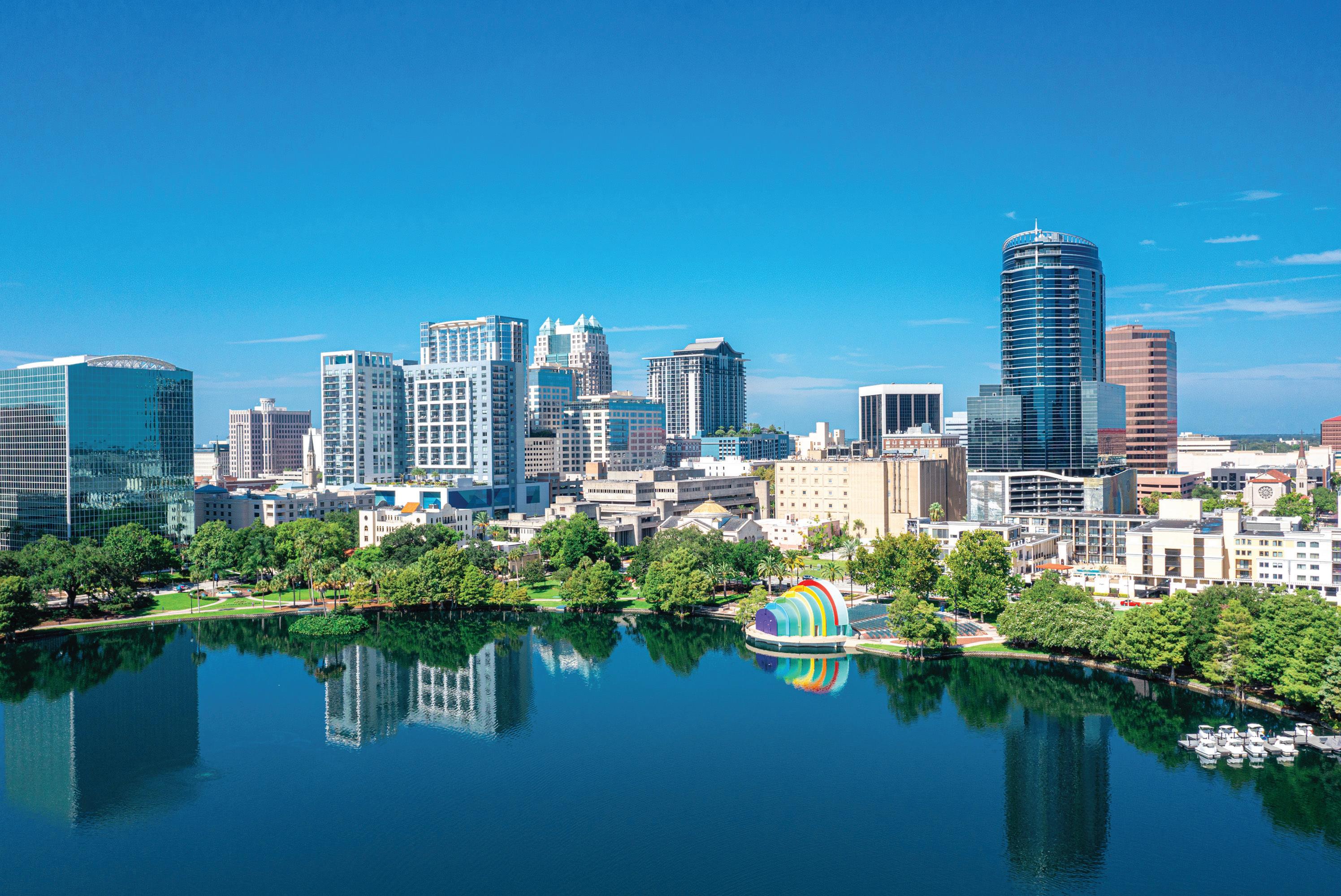
decision instantly. But with that said, our really nice, remodeled and wellpositioned luxury homes are still moving quickly…I would say there’s definitely negotiations that are happening on both sides of the transaction right now.”
A reduction in international buyers in some U.S. luxury markets may be bad news for sellers but it’s good news for domestic buyers. Palm Springs, Rancho Mirage, and Indian Wells, markets that tend to attract a large proportion of Canadian buyers, have seen “a significant reduction,” Consedine said. “Some escrows were canceled in light of the current administration’s activities, so the Coachella Valley is preparing itself to be much more impacted because many of the Canadians are selling their
second homes.” This could be good news for domestic buyers, who will face more choice and less competition.
The slowdown in international sales is not necessarily bad news for sellers, Mesa added, given that the primary demand for luxury Florida properties is from domestic buyers from the Midwest and Northeast, as well as “a tremendous amount of demand from Californians.”
In New York, the second quarter of the year saw “a slight fluctuation” in the number of international buyers, Laffey said. Political and economic uncertainty led some ultra-luxury buyers to delay their purchases, “but I believe that is going to be very short-lived,” he added. “We have a very, very robust international buying market, so that will always be a significant piece of the
7.5 MONTHS
In central Florida, there are 7.5 months of non-new construction, resale luxury homes right now, offering an opportunity for buyers.




ON








Park City, Utah, is a primary home market now
Park City, Utah’s sturdy luxury market saw prices rise again this year, a surge partly fueled by seasonal residents who are relocating full time and seeking more space.
“Before Covid, the numbers were heavily weighted toward second homes, and the true Park City would re-emerge during shoulder season,” said Steve Roney, chairman, CEO, and owner of Berkshire Hathaway HomeServices Utah Properties. “Once people started spending more time here, they turned into fulltimers, decided they needed more room and upgraded to larger homes and condos.”
From January to May 2025, sale prices in Park City averaged $3.164 million, compared with $2.392 million for the same months in 2024, Roney said. The median price soared 37% for the same period, from $1.515 million in 2024 to $2.085 million in 2025. But the numbers don’t reflect activity at the top of the market, he said. “We’ve had sales of $40 millionplus. And we’ve had 64 sales of more than $5 million, year to date. It was 44 in the same period last year.”
Utah’s economic strength and favorable tax rates have been major drivers of Park City’s growth—and magnets for wealthy buyers, Roney said. “This area’s been called the Silicon Slopes. We get a lot of talent
from Northern California, with startups and secondary offices here,” he said. Two nearby airports service private flights.

Park City “is special because it’s a mountain resort that’s a fourseason destination, with world-class skiing and a full range of summer activities, including golf courses all over the place,” Roney said.
Park City’s downtown, the Main Street Historic District, is listed on the National Register of Historic Places. “It’s attractive, and goes back to the mining days of the early 1900s,” Roney said.
Medical services in the region are “first class,” he added and its schools are “consistently rated the best in Utah.” Private schools nearby are also highly regarded.
“Short of world upheaval, I see no reason why prices won’t continue to climb somewhere in the 10% range,” Roney said.
To meet demand, Park City is also developing “rapidly, but very responsibly,” Roney said. “Many of the hills here are, thankfully, conserved, and there’s not much land to build on.”•





buyer pool.” Uncertainty around tariffs also caused some domestic buyers involved with imports and exports or international businesses to put purchases on hold in the second quarter of the year, he added, but he expected those buyers to ultimately move forward with purchases.



Economic uncertainty puts sales on pause—but cancellations are rare
Stock market fluctuations are having an effect on the housing market in both positive and negative ways, according to Berkshire Hathaway HomeServices network agents surveyed. In fact, while just over 60% of respondents said that stock market uncertainty has halted some deals, just about the same number believe that uncertainty can actually help the real estate market.
As of now, many luxury buyers are biding their time while they wait for more economic stability, while interest rates may become a driving force behind market shifts later in the year.
When it comes to stock market turbulence, “the wise investor will ride it out,” Consedine said, though fluctuations in the second quarter of 2025 led to some canceled sales “because buyers were using those assets to finance their purchase,” Consedine added. “On the flip side, we did see, especially up in Santa Barbara and in Los Angeles, a fair number of new transactions started because investors were putting their money into the real estate market, as opposed to leaving it in the stock market.”
In Florida too, “with the wild swings that we’ve seen in the stock market,

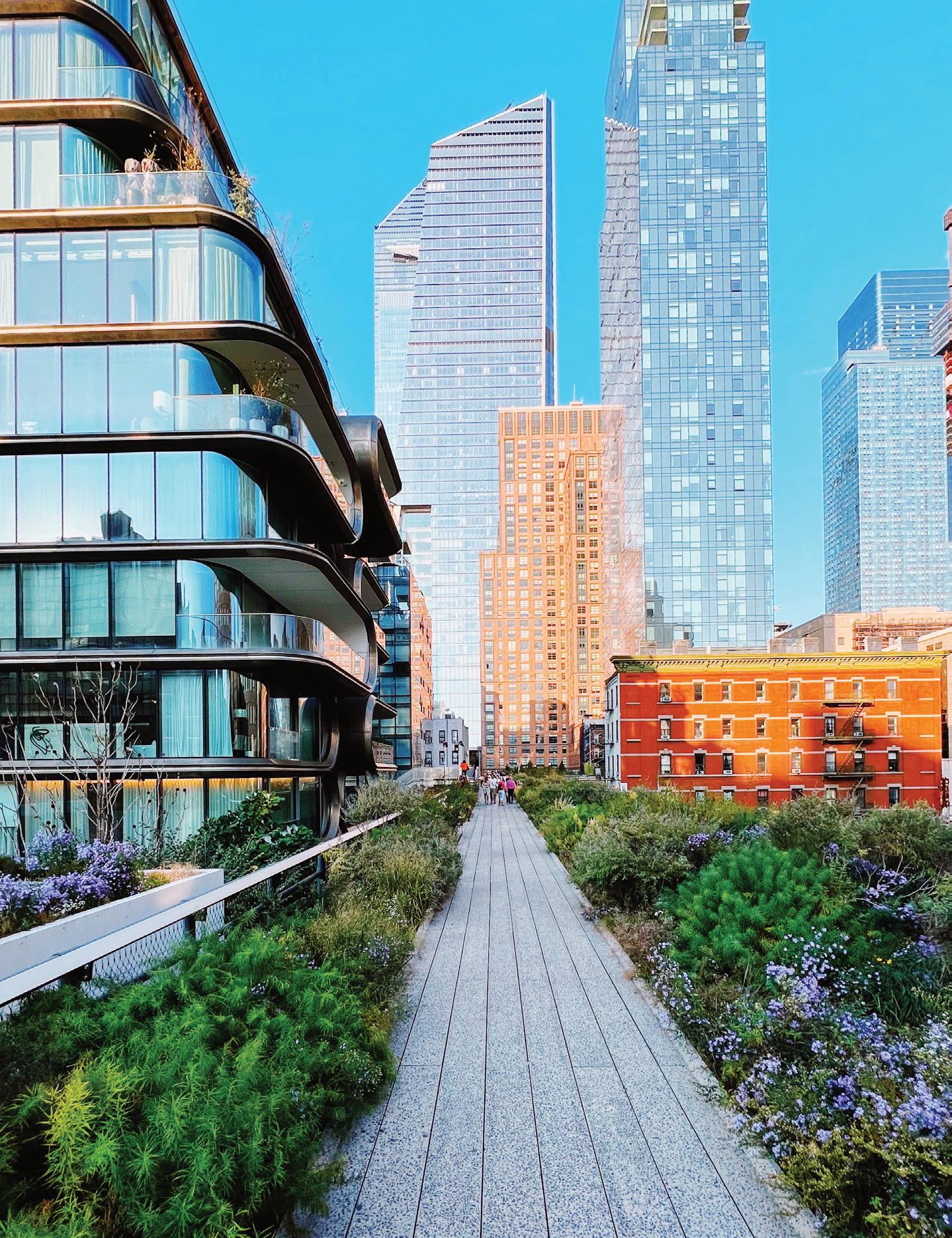
I think real estate becomes more of a certainty investment,” Mesa said, but buyers do sometimes delay their decisions. “They look for a little bit more certainty and stabilization.”
In New York, “people in the ultra-luxury market are often tied deeply into Wall Street,” Laffey said, “so if there is any major change to the financial markets, that will always have an effect. However, the feeling I get on the street today is that the future still looks pretty strong.”
Going forward, interest rates are likely
to have a significant impact on the luxury market, despite a high proportion of cash buyers at the top end of the market. “Luxury move-up buyers—using jumbo financing or some other form of financing, or intending to take money out of the stock market or out of wealth areas—I think would struggle with interest rates as they sit today,” Bryan said, suggesting that some buyers may be waiting to make a move.
In New York, where approximately 50% of luxury buyers use financing, a reduction in interest rates could make the market
Of the Berkshire Hathaway HomeServices network members polled, more than 60% thought real estate could get a boost from being a safer bet than the stock market.
Could the uncertainty in the stock market help the high-end real estate market?
hotter, Laffey said. “The market has been increasing and interest rates are still at a five-year high. If rates pull down only as much as 1%, they’ll push the market even higher,” he said. “So as a buyer, my best advice to you is to secure your property now.”
Conversely, a drop in rates could lead to an increase in inventory, he said, as sellers who are reluctant to remortgage at today’s rates make their move, meaning that for sellers, “if a mortgage is not part of your decision, now is the time to sell,” he added.•











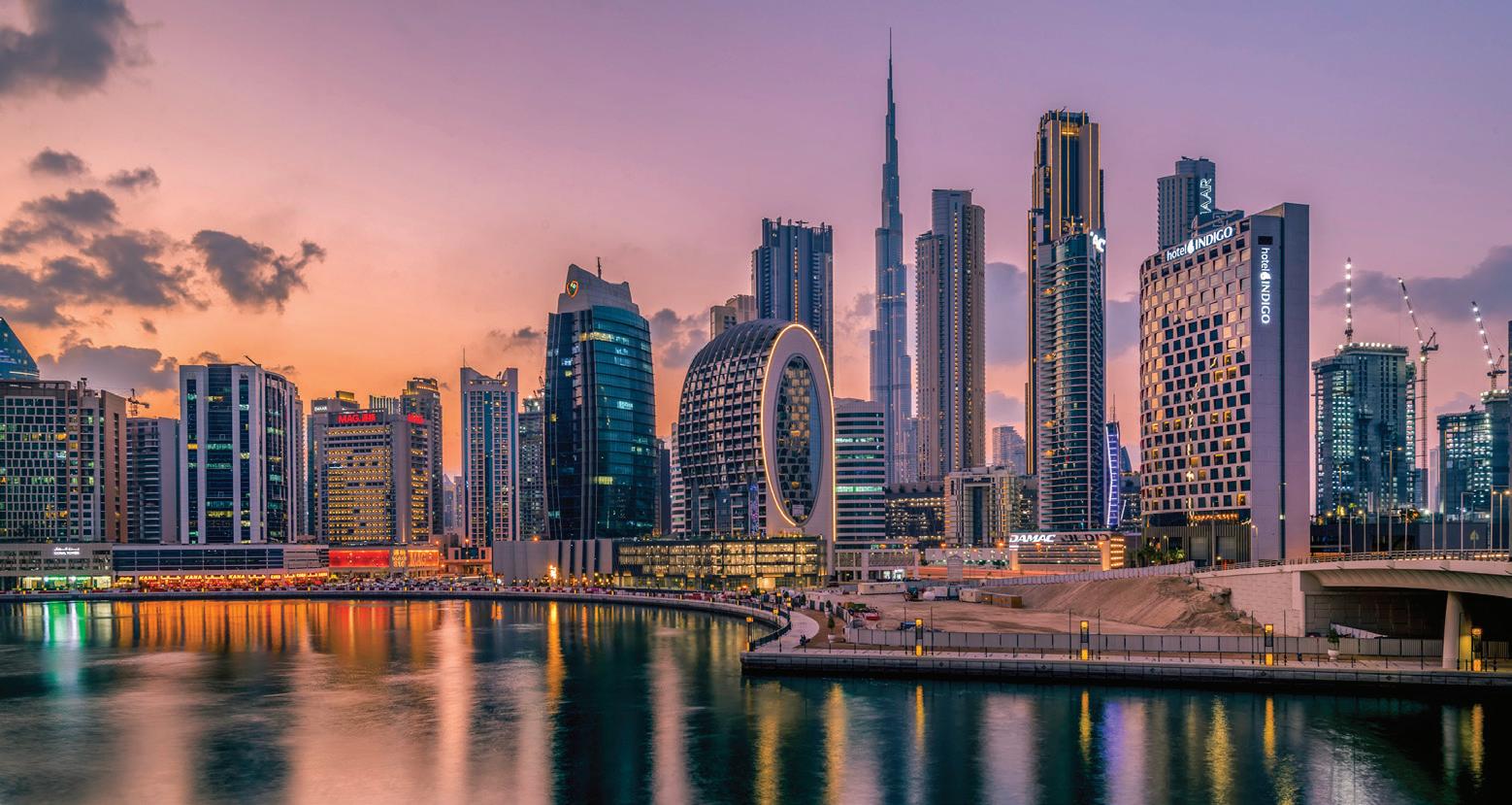
While every market has its highs and lows, in 2025, Dubai is riding very high and the lows are hard to identify. The city is famous for its stability and security, both factors that help to attract international buyers during turbulent times, said Phil Sheridan, CEO of Berkshire Hathaway HomeServices Gulf Properties. Even geopolitical crises in the Middle East seem to leave Dubai rather unaffected.
“When you buy Dubai real estate, you’re buying the lifestyle. That is drawing the most well-informed, high-net-worth international buyers,” he said.
Following its strongest first quarter in over a decade, the city recorded its best-ever quarterly sales during the second quarter of 2025, with sales
figures surging to US$50.2 billion, marking a 22% rise in volume and a 49% increase in value year on year, according to local portal Property Finder. The market is predicted to continue to heat up this year, although “the pace of growth may stabilize toward the end of the year as new supply is launched,” according to Deloitte’s Middle East Real Estate Predictions 2025 report.
Sheridan said that the speed of new construction and a swiftly growing population have created unique market conditions. “Do I think if you bought today, you’d make money in 12 months’ time? Yes,” he said. “Do I think if you’d bought a property 12 months ago and sold it today, you would have made money? Yes. It’s not going to stop anytime soon.”





New branded residences are particularly popular with international buyers and savvy investors will buy off-plan residences and sell them once completed for a significant profit, he said. Off-plan sales accounted for 57% of all transactions in Dubai in the second quarter of 2025, increasing 16% in volume and 31% in value year on year, but the secondary residential market outperformed expectations this year, experiencing record-breaking growth of 33% in volume and 62% in value year on year in the second quarter, marking the highest-ever results for the segment, according to data from Property Finder.
The pool of high-net-worth buyers is set to continue expanding in 2025. The United Arab Emirates is currently the world’s most in-demand wealth haven, expected to attract 9,800 new millionaires boasting a combined net worth of US$63 billion by the end of this year, according to the Henley Private Wealth Migration Report 2025 from investment consulting firm Henley & Partners.
“This is not a market that’s affected by interest rates,” Sheridan said. “It’s unstoppable.”•

President Donald Trump’s announcement of a $5 million Gold Card granting permanent U.S. residency sparked interest among some high-networth individuals, generating a waiting list of 15,000 applicants in June 2025; the U.K. recently changed its tax rules for foreign property owners; other countries, such as Portugal and Spain, revised their Golden Visa rules for foreign investors. Amid these changes and global volatility, interest in cross-border property purchases remains steady.
U.S.: Foreign buyers have not disappeared, but in New York, they’re harder to find
International searches for U.S. property grew to 1.9% of all searches during the first quarter of 2025, compared with 1.7% in the first quarter of 2024, according to research released by Realtor.com in June 2025.
Canadians are the highest percentage of international searchers at 34.7%, although this was a decline, compared
with 40.7% in 2024, perhaps due to a challenging political situation between the two countries. (The U.K., at 5.7%, Mexico, at 5.4%, Germany, at 3.8%, and Australia, at 3.2%, followed.)
Miami was the most popular market for international searches in the first quarter of 2025, with 8.7% of demand, while San Diego, San Francisco, and Las Vegas dropped off the list of top markets for foreign buyers.
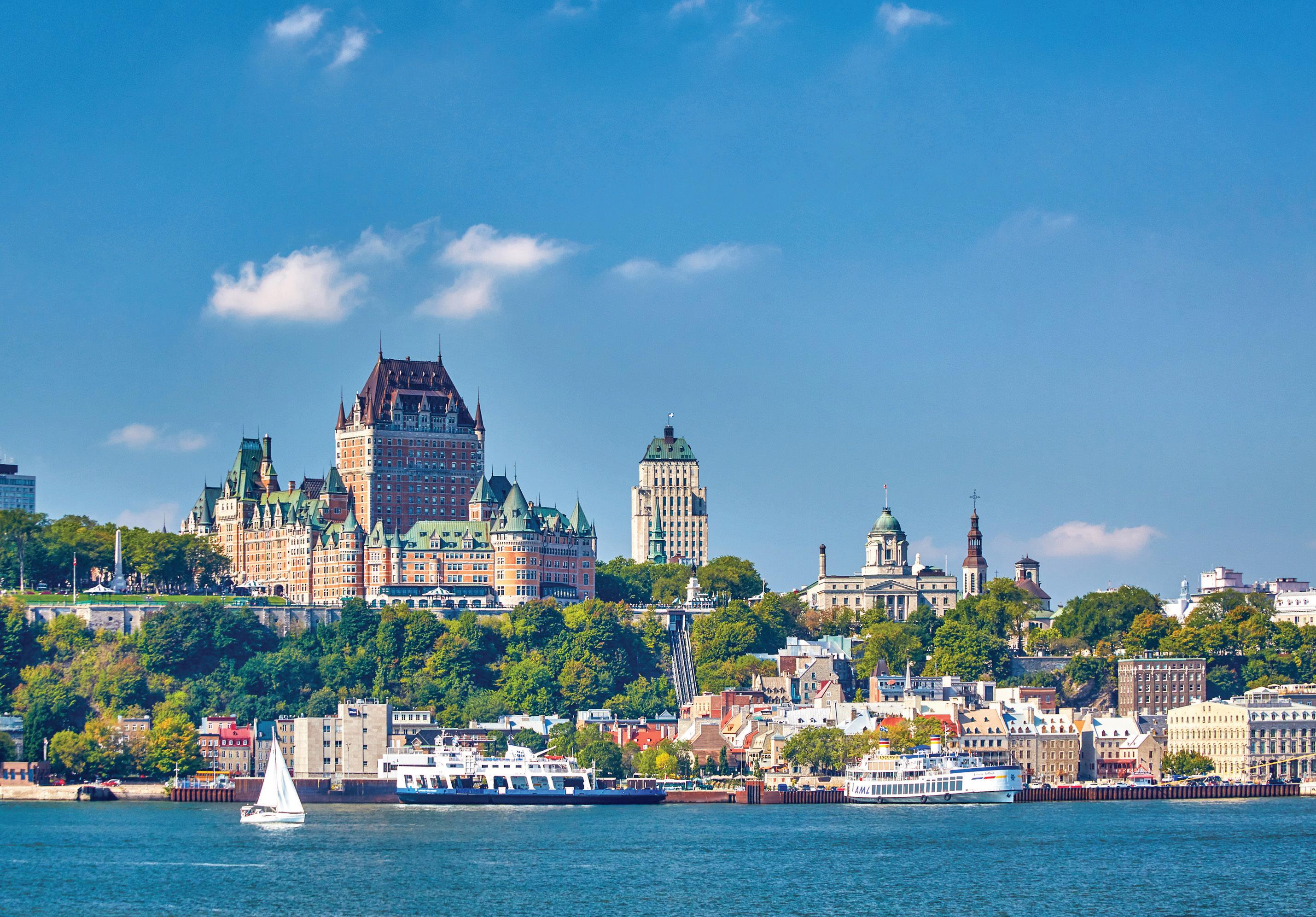
34.7%
Despite seeing a year-over-year decline, Canadians represent the highest percentage of international searches for U.S. real estate, according to Realtor.com, followed by the U.K.
That said, Steven James, president and CEO of Berkshire Hathaway HomeServices New York Properties in New York City, said he’s seen the effects of the loss of several demographics. “International purchases, especially Chinese buyers, were consistent in the past. But starting several years ago, Chinese buyers couldn’t get their money out of China.”
Rapid price increases and a stronger dollar have made real estate investing more costly in recent years. “We still haven’t seen a new surge of foreign buyers,” James said. “I don’t have much faith that Trump’s Gold Card will create much demand. Most buyers with $5 million or more to invest can usually
buy in the U.S. anyway and are not necessarily looking for residency.”
However, foreign buyers are still part of the real estate story in New York, he said. “People still see the U.S. as a safe haven.”
Canada: Foreign-buyer restrictions limit incoming purchases; Canadians look beyond the U.S.
Non-Canadians have been prohibited from buying property in Canada since January 2023 unless they are legally married to a Canadian, have a work or student visa, or buy through a company in which the buyer owns 10% or less of the shares, explained Sacha Brosseau,
founder and CEO of Berkshire Hathaway HomeServices Québec in Montreal.
“That rule is set to expire in January 2027, and most people don’t expect it to be extended because we need an influx of foreign capital now,” Brosseau said. “In 2016 and 2017 there was a huge influx of foreign buyers in Canada, which triggered concern about rising prices.”
Before the law went into effect, 66% of buyers in Vancouver and 35% in Toronto were non-Canadians, he said. “Those are the two cities seeing the biggest slowdown in sales now,” Brosseau said.
As for Canadians buying overseas, Brosseau said the U.S. is losing them because of the political climate.
“We’re seeing outbound referrals for Canadians buying property in London, Italy, France, Greece, and the U.A.E. from people in Québec,” he said. “People from Toronto tend to buy in Spain.”
Mexico: Capital leaves the U.S. to this top travel destination
The Los Cabos area of Mexico, a top global travel destination, experienced a shift to more foreign purchases of primary residences during the pandemic, said Ian Gengos, owner and designated broker for Berkshire Hathaway HomeServices Baja Real Estate in San José del Cabo. Business growth encouraged airlines to add more direct flights from major cities in the U.S. and Spain.
“There’s been another seismic shift in 2025 because of geopolitical factors in Mexico and the U.S.,” Gengos said. “We’re seeing more luxury buyers diversify their real estate portfolio with a property in Mexico and a property in Spain rather than multiple properties in the U.S.”
American investor interest in Mexico has increased, he said, particularly for large properties in Cabo and branded residences for rental income. Chinese and Indian investors are also actively seeking safe investments more than pleasure properties, Gengos said.
Sales were up about 30% during the first quarter of 2025, and Gengos anticipates sustained strong sales.
U.K.: A flat market is likely after big changes to nondomiciled status
Policy changes in the U.K. have negatively impacted the luxury market in London, said Martin Bikhit, managing director of Berkshire Hathaway HomeServices London.
We’re seeing more luxury buyers diversify their real estate portfolio with a property in Mexico and a property in Spain rather than multiple properties in the U.S.”
Ian Gengos
Berkshire Hathaway HomeServices Baja Real Estate
1.9 %
International searches for U.S. property grew to 1.9% of all searches during the first quarter of 2025, from 1.7% a year prior, according to research released by Realtor.com.






The Caribbean luxury markets remain busy, with high demand, steady prices, and an overall improvement year over year.
“Sales have picked up quite a bit, especially at the high end and especially compared with last year, which was a bit of a slowdown,” said Jim Bernard, president, broker, appraiser, and Luxury Collection Specialist at Berkshire Hathaway HomeServices Bahamas Real Estate. Prices are strong, and they continue to hold, particularly for waterfront properties, he said.
The inventory for single-family homes is fairly tight, but the demand is still there, he said. Condo inventory, on the other hand, is up thanks to significant development.
The Cayman Islands market was “incredibly resilient, with growth through 2024, and we are seeing that trend continue into early 2025,” said Paula McCartney, broker and owner of Berkshire Hathaway HomeServices Cayman Islands. In the first quarter of this year, the average price of a sold listing was US$1.374 million—a 6.8% increase year over year.
A good portion of this increase was in the luxury and ultra-luxury property sales. One 17,000-squarefoot waterfront home in Crystal Harbour sold for US$26 million.

In addition to its top amenities, the Cayman Islands has a no-tax environment that appeals to those looking to preserve wealth.

The luxury single-family home market in the Cayman Islands “is demonstrating robust activity” while the sales of single-family homes under US$500,000 have been declining in recent years, she said.
In the condo market, “despite a dip in sales volume, condominium prices have recorded a 4% increase in 2024 compared with 2023, with data from 2025 suggesting a similar upward trend.”
The luxury rental market is “absolutely booming, with very low inventory,” McCartney said. Rents in the Cayman Islands have doubled over the past 10 years.
In The Bahamas, the luxury rental market is also quite strong, with very limited inventory, Bernard said. Prices for luxury homes in Lyford Cay range from $20,000 to $40,000 a month.
Younger buyers are making moves, Bernard said. “We’re also seeing more families coming here looking for large estates.”
Draws
With 700 islands and clean, clear water, The Bahamas is a boater’s paradise.


“We have a tax-friendly environment,” with no income or inheritance taxes and no taxes on capital gains, Bernard said.
The same no-tax environment makes the Cayman Islands a “top-tier jurisdiction for wealth preservation,” McCartney said. There are more than 600 banks, hedge funds, and insurers in the Cayman Islands, making it “among the top five global financial centers,” she said.
There are also no restrictions on foreign property ownership.
“Grand Cayman in particular has first-world amenities, luxury brands, and international schools,” she added.
“I don’t see any signs of demand letting up. Prices are supported by limited inventory. The demand is still there,” Bernard said.
McCartney is similarly optimistic about the Cayman Islands. “The outlook is for steady growth in 2025 and 2026, supported by a resilient economy, lower mortgage rates, strategic developments, and a mix of international investors and local residents,” she said.•





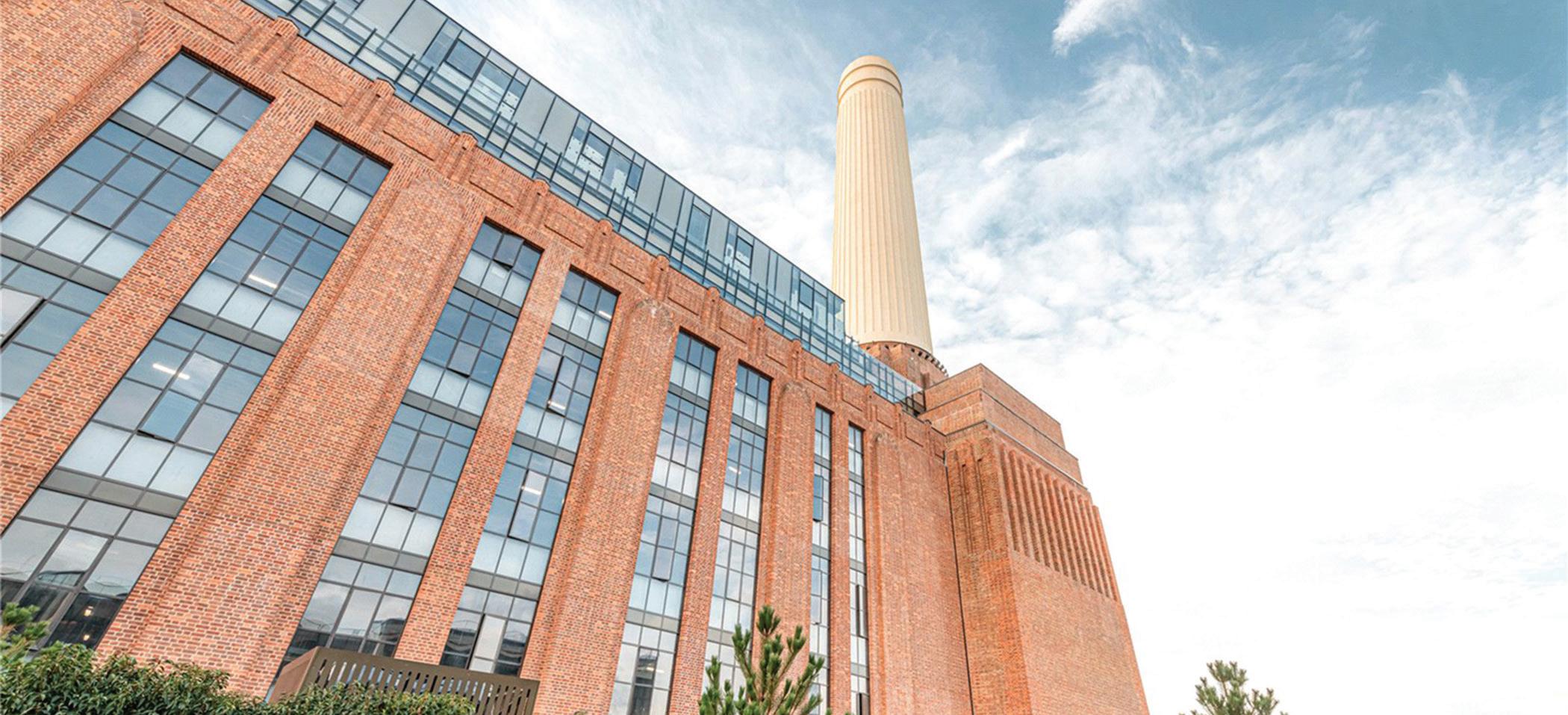
buyers
“We’ve seen a notable flight of wealth from the U.K. to places with more tax advantages, such as Dubai, Morocco, and Italy,” Bikhit said. “Previously nondomiciled property owners didn’t have to pay taxes on their worldwide assets, only income and assets in the U.K. Now that benefit is gone.”
Prices are down 10% to 15% compared with one year ago, he said.
“The big story though, is the number of homes priced at £5 million and above is at an all-time high, 69% above the pre-pandemic level,” Bikhit said.
Americans make up the biggest percentage of international buyers, along with Canadians and Turks.
“Those buyers tend to be looking in London for geopolitical reasons,” Bikhit said.
Bikhit expects the market to be flat throughout 2025.
“But this is a global city, and this is just an economic and political cycle,” Bikhit
said. “These policies will change. I think we’re moving to the bottom now and will begin to head up again next year.”
Portugal: Housing market picks up as travel gets easier
Portugal’s lifestyle, climate, and safe environment attract foreign buyers, said Gonçalo Penedo, business director of Berkshire Hathaway HomeServices Atlantic Portugal in Estoril.
“It’s easy to get here with direct flights from New York, London, Paris, and Madrid,” Penedo said. “Demand is high and inventory is low, even with the changes to the Golden Visa program.”
In 2025, Portugal revised its Golden Visa program to eliminate real estate purchases as a path to residency, but foreigners who invest €250,000 or more can still apply. Portugal also has a nomad visa for remote workers and a descendants visa for people with Portuguese relatives, said Michael Vincent, CEO and president of Berkshire Hathaway HomeServices Portugal Property in Vilamoura.
A (somewhat small) majority of Berkshire Hathaway HomeServices network members in the U.S. said they haven’ t seen a change in interest from foreign buyers so far this year.
If you're in the U.S., are you seeing fewer international buyers this year as opposed to last year?
After property sales were down in 2023 and 2024, the housing market is picking up now, he said, “especially since we now have direct flights to the Algarve,” referencing flights from New York and the U.K.
“We had political turmoil, then the Golden Visa program ended, followed by changes in tax requirements and the elimination of some rental licenses, all within six months,” Vincent said. “But our sales now are 100% higher than in May 2024.”
Lower interest rates and low property taxes entice foreign buyers, Penedo said.
“About 45% of foreign buyers here come from the U.S. and Canada,” Vincent added. “Other buyers come from Germany, France, Brazil, and Northern Europe, and we’ve also seen a big jump in U.K. buyers since Brexit.”
Spain: Despite a loss of the Golden Visa, demand remains
Spain’s tourist attractions contribute to the continued growth of international real estate buyers, said Bruno Rabassa, CEO of Berkshire Hathaway HomeServices Spain in Madrid. The climate, lifestyle, gastronomy, safety, communication and transportation networks also draw foreign buyers, he said.

“We’ve seen even more searches from the U.S. since its presidential election, along with wealthy Ukrainians moving to Spain since the war began,” Rabassa said.
Purchases by foreign buyers in Madrid rose 8% in April 2025, compared with April 2024 while prices rose 15% to 20%, Rabassa said. In Barcelona, there were 20% more foreign buyers year over year, primarily from the U.S. and Europe.
Spain ended its Golden Visa program in April 2025, but Rabassa said the impact will be minimal.
“Only 400 buyers out of the 143,000 foreign purchasers in 2024 used the Golden Visa program,” he said. “There are other options, including a nomad visa for people working remotely.”
Foreigners can also gain residency status in Spain when they invest €1 million in a Spanish company.
“The main challenge we face is low inventory,” Rabassa said. “In 2007, 850,000 homes a year were being built in Spain, but ever since then just 90,000 units a year have been built. In addition, our interest rates are 2.75% to 3%, which pushes demand from foreign buyers even higher.”•
We had political turmoil, then the Golden Visa program ended, followed by changes in tax requirements and the elimination of some rental licenses, all within six months. But our sales now are 100% higher than in May 2024.”
Michael Vincent Berkshire Hathaway HomeServices Portugal Property











Over the past year, the London luxury market has softened, with an influx of inventory and a drop in prices.
“Inventory is up across the board,” said Martin Bikhit, managing director of Berkshire Hathaway HomeServices London. “I can’t recall a time when we’ve had so many homes above £5 million.”
Despite being a seller’s market just a year ago, according to Bikhit, it’s now a buyer’s market. Prices are softer, probably 10% off from where they were a year ago, he said. On the plus side, interest rates are “slowly creeping down.”
London has been impacted by a number of geopolitical events that are causing international buyers some concern and anxiety, Bikhit said.
Continuing conflicts in Ukraine and the Middle East are creating heightened anxiety, he said, as are potential conflicts in Taiwan.
“At the same time, the threat of escalating trade wars and new tariffs between major global economies is compounding these concerns, fueling fears of a wider economic slowdown,” Bikhit said.

Another concern involves changes to nondomicile tax rules and regulations, he said. These have been “particularly destabilizing at the ultrahigh-net-worth level.” The prospect of a United Kingdom tax being applied to worldwide income and assets, especially inheritance tax, has prompted many wealthy individuals to reconsider their U.K. ties.
While there has been recent talk of softening or reversing the reforms due to their broader economic implications, the uncertainty has already taken its toll.
“We are now seeing fewer ultraluxury purchases, with buyers opting for smaller, more flexible residences instead of primary homes,” Bikhit said.





The market below £2 million is still reasonably active in Central London, he said, for those buying primary residences. Transactions between £3 million and £10 million have really dried up, he said. “That’s the market where you have some wealth but not infinite wealth, where global events cause you some concern.”
In the £40 million to £50 million range, people “are here and hovering and looking—and they will buy.”
“At the end of the day, it is politically stable in the U.K.,” Bikhit said. “London will bounce back. Now there is a lot of opportunity for buying assets competitively. It’s a question of waiting this cycle out. And London has education and culture, all the usual draws.”
The London luxury rental market is strong, with an increase in supply in the last year, Bikhit said. Rental prices are down “maybe 2% or 3%. Rentals are far more desirable in a period of flat growth.”
“I think this year will be flat, and we’ll see some modest growth next year,” he predicted.•

In times of economic uncertainty, many investors look for a safe place to park their money. Purchasing high-end real estate has always been one of the best financial decisions for long-term wealth building, and Generation X buyers—who are 45 to 60 years old—are confidently snapping up properties that offer a recreational lifestyle, potential rental income, and a healthy long-term return on investment.
“We're definitely seeing a lot of Gen X buyers wanting to diversify from the stock market just due to the recent volatility,” said Ryan A. Schulz, managing broker at Berkshire Hathaway HomeServices Colorado Real Estate who is based in Denver. “I have a lot of clients that have purchased, in Summit County and the ski resort areas, those short-
term rental properties just for some diversification of their portfolio.” Bonus: They get to enjoy the space when they are not renting it.
Born between 1965 and 1980, there are about 65.2 million Gen Xers in the U.S., according to the 2020 U.S. Census, the most recent data available. The group— many of whom are at their earning peaks right now—is set to be the largest generational cohort by 2028. Many members of this generation are also on the receiving end of the “Great Wealth Transfer,” which is reallocating trillions of dollars in resources from older Americans to their heirs. So they have sizable portfolios to protect, and they know real estate investment can help them do that while expanding their net worth.
This 12,000-square-foot estate on a private lot in Camp Hill, Pennsylvania, can easily accommodate multigenerational households with the use of its carriage house.
“Real estate is always going to be one of your best investments. It’s not something to hold for five years, but if you plan to hold it for 10 to 20, it’s going to do well,” Schulz noted, adding that the Denver area typically sees 5% to 6% annual appreciation. Even during the recession of 2008, many core areas of Denver still saw annual growth of 2% to 3%, he said.
Luxury real estate is ‘a very strong, stable investment '
For many in the Gen X cohort, real estate is an important piece of a healthy financial profile, albeit not the only piece, according to Wendy C. Civitella, regional president of Berkshire Hathaway HomeServices Fox & Roach, REALTORS® in Rosemont, Pennsylvania.
65.2 M
The number of Gen Xers currently in the U.S., according to the most recent census data.












There’s something exciting happening in Motor City’s luxury market. Detroit, known as the birthplace of Motown and the auto industry, is very much on the upswing—and so is the entire metro area.
“Detroit is experiencing a notable surge in luxury real estate development, signaling a transformative era for the city’s urban landscape,” said Sabra Sanzotta, owner at Berkshire Hathaway HomeServices The Loft Warehouse. “This evolution is epitomized by the rise of Hudson’s Detroit, a mixeduse skyscraper poised to become Michigan’s second-tallest building upon its completion this year.”
The tower will house Detroit’s first five-star hotel, The Detroit Edition, along with 97 luxury condos—priced at $1,500 per square foot and above—that boast panoramic views of the city and the Detroit River, plus amenities like a rooftop terrace, pool, spa, and multiple event venues.
Complementing this development is The Residences Water Square, Detroit’s first all-glass residential high-rise located along the riverfront. Rentals range from $1,750 to $4,775 per month and units feature floor-to-ceiling windows, custom Italian cabinetry, and Europeaninspired finishes.

Beyond the city limits, new luxury construction is surging, with developments such as Brookside in Birmingham, 15 minutes north of Detroit. At this 27-unit development, condos range from 2,200 square feet to 10,000-plus square feet and average $1,000 per square foot. Birmingham is “a European-style small town with a quaint city center, walkable streets, unparalleled schools, and upscale boutiques,” Sanzotta said.
Driving all this demand: the substantial investment in Detroit’s infrastructure and economy.
For example, Henry Ford Health, in collaboration with Michigan State University and the Detroit Pistons, is spearheading a $3.3 billion Future of Health development in the New Center neighborhood, perched about three miles north of the city center. The ambitious project includes a 1.2 million-square-foot hospital


expansion, a 335,000-square-foot research center, residential and mixed-use buildings, and extensive green spaces, Sanzotta said.
Additionally, Ford Motor Co.’s revitalization of the historic Michigan Central train station in Corktown, Detroit’s oldest neighborhood, located a few miles west of downtown, and transformation of the building into a 30-acre innovation hub, has led to a steady rise in prices for homes in Corktown.

These developments collectively signify the resurgence of Detroit and its surrounding suburbs as a hub for luxury living, cutting-edge technology, and urban revitalization.
“The city’s strategic investments are not only enhancing its skyline but also fostering a dynamic environment that appeals to residents, businesses and investors alike,” Sanzotta said.•
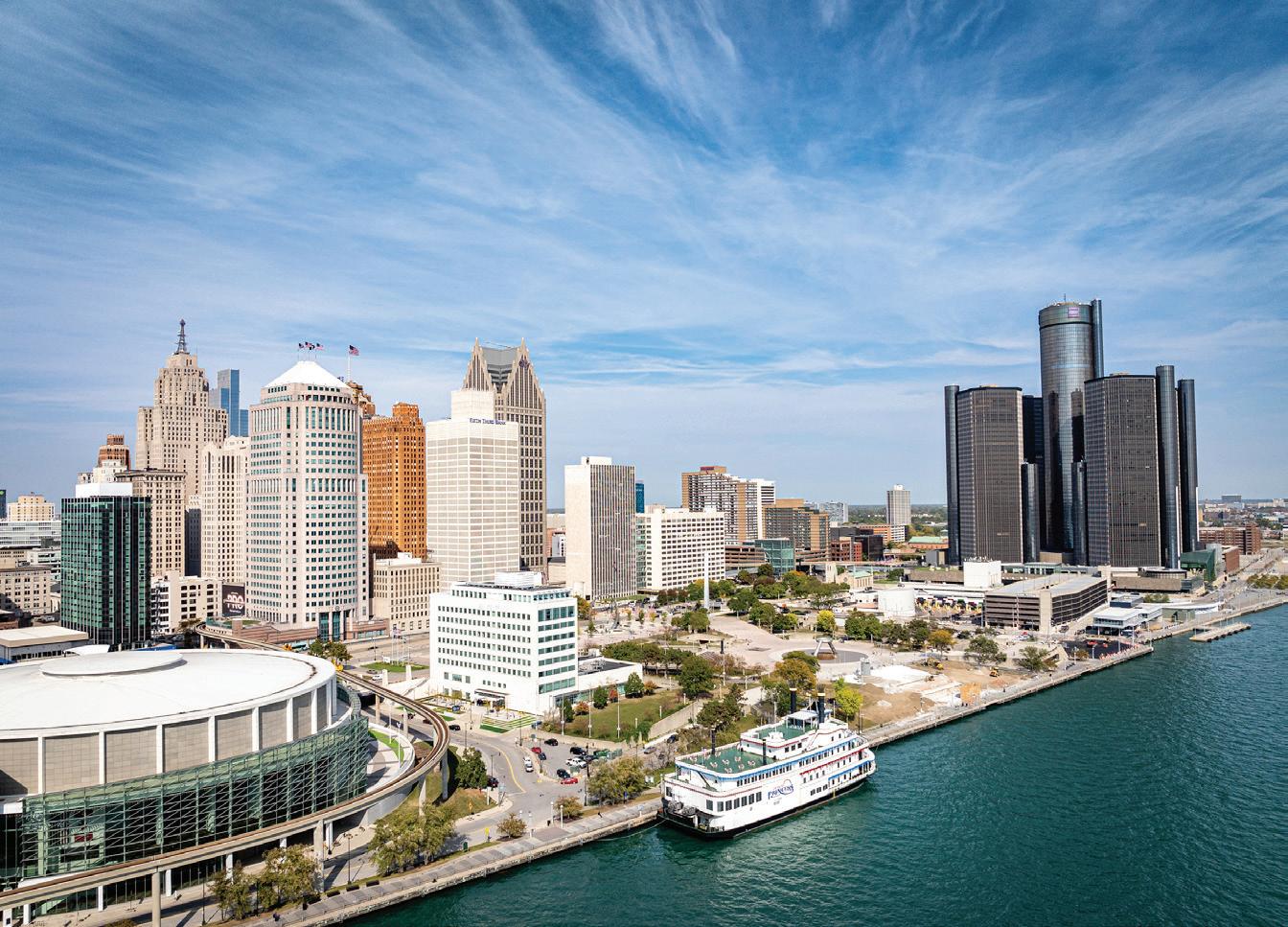
For every person we’re seeing pulling back because of the uncertainty, you’re seeing another one saying, ‘all right, we’re gonna put our money into a second home instead of the stock market, and that’ll be a little less volatile over the next few years.’ ”
Matt Stevenson Berkshire Hathaway HomeServices Sun
Valley Properties in Ketchum, Idaho
There’s a noticeable uptick in a desire for homes that will fit the whole family, according to network members.
Are you seeing more interest
“This is a strategic group and they’re making sure they have investments across the board. But I do think that they find real estate to be the most stable and they know that from experience. They have typically built a lot of equity in their homes already,” she said.
In her area of the country, homeowners may have seen as much as 60% price appreciation on their properties in the past few years, she added. “It’s astronomical,” she said. “And I think we all know that those who own a home build wealth faster than those who don’t.”
While most of Civitella’s clients are looking for primary residences, that’s not the case for clients of Matt Stevenson of the Stevenson Real Estate Group at Berkshire Hathaway HomeServices Sun Valley Properties in Ketchum, Idaho.
“For the luxury condos in town, most of them are second homes for these guys,” he said, noting that vacant land is also popular for those looking to build a dream house in the future. The stock market volatility registered in the first half of 2025 did not spook his buyers—or if it did, it was short-lived.

“It didn’t cause many of these people to pump the brakes,” Stevenson said. “But for every person we’re seeing pulling back because of the uncertainty, you’re seeing another one saying, ‘all right, we’re gonna put our money into a second home instead of the stock market, and that’ll be a little less volatile over the next few years.’”
Most of his clients are also banking on the investment potential provided by limited land and strict building restrictions near the Sun Valley Resort, one of the premier skiing destinations in the U.S. And the resort has also been a driver behind the city’s push for more year-round amenities and events, like summer concerts and a comedy series, he said.
“By the time they get to me, their question is, ‘am I gonna get hurt by buying this?’” Stevenson explained. “Obviously I don’t have a crystal ball, but we’re pretty insulated here, more so than the broader national market…We’re really limited and constrained on inventory

and space so, outside of 2008, we’ve weathered these ups and downs pretty well with slow appreciation every year— other than Covid where prices just went through the roof.”
Rethinking space, inside and outside the home
Some Gen X buyers are also looking to make good on their investment in real time. That means offering it as a shortterm vacation rental, according to Stacy Mathews, CEO of Berkshire Hathaway HomeServices Premier Properties, which serves the greater Houston area.
“We have seen people buy property and use it for an Airbnb,” he said. It’s especially popular in vacation communities like coastal Galveston, Texas, or college towns, like Lubbock, where Texas Tech University is located, according to Mathews. Investors often hire property managers to deal with issues as they arise, so they don’t necessarily need to be on site.
Mathews has also seen more interest in multifamily units to lease to multiple tenants, as well as an uptick in upperend townhouses with very small yards and no maintenance in Houston.
“Sales are relatively good in those areas. People want walkability,” he said.
That’s not necessarily the case in other areas of the U.S. Pennsylvaniabased Civitella has found Gen X buyers want a lot of amenities in a home, both indoor and outdoor. They don’t always want to do the work, however, which often means paying more to close the deal.
“They are willing to pay top dollar for all the things that really fit their criteria,” Civitella said. “Outdoor spaces are more important than they ever have been. Home offices are almost the first thing that they want to see when they go into the home. And then the renovated kitchens and baths.”
Lake Tahoe, California, appeals to affluent buyers because of its natural surroundings and high-end housing stock.
Additional living space is another request from Gen X buyers, she added, many of whom still have kids in the house. But they may also have aging parents—hence their newer nickname, the sandwich generation.
“They want flexible space. They want to be able to potentially have multiple generations under one roof,” she said, adding the trend often arises from need, rather than desire.
Las Vegas-based Troy Reierson, CEO of Berkshire Hathaway HomeServices Arizona Properties, California Properties and Nevada Properties, agreed. He and his wife are members of the Gen X cohort, and she would like to invest in a house with a casita (or additional dwelling unit) for family to use.
In fact, having a home that can expand to include a growing family is something many Gen X buyers are willing to invest in. And not just for their parents, but also their kids. Reierson has a 15-year-old daughter who may also be looking for a place in a few years. He’s hearing more clients and peers talk about the need for more space, he noted.
“It’s difficult. When you have aging parents, it is so ridiculously expensive to go into assisted living—it’s $8,000 to $15,000 a month sometimes. And a lot of this age group weren’t prepared for that,” Reierson said. “I do believe that will be more and more of a trend as we move forward with aging folks.”•









Greenwich, Connecticut, is an established luxury enclave where $2 million to $4 million fly off the shelves
With its postcard-perfect waterfront and elegant downtown, Greenwich, Connecticut, has long been a sought-after luxury residential market. And at the moment, it’s more popular than ever.
“There hasn’t been a dip,” said Brenda Maher, president of Berkshire Hathaway HomeServices New England, New York, and Hudson Valley Properties. “Inventory is still quite low, and competitive bids are common. It’s definitely a seller’s market.”
That said, “buyers have been very value-driven, and if a property’s not priced right or staged properly, it’s going to sit longer,” Maher said. “Even though nearly half our sales are cash deals, buyers still want value. Especially at the $10 million to $15 million range, a property may not sell quickly if it’s not priced right.”
Inventory in Greenwich “is all over the map,” from $2 million starter homes to “megamansions at $20 million and up,” Maher said. “But what’s selling most is in the $2 million-to-$4 million range. For that, you’re getting a smaller renovated house. We recently had a $1.9 million listing that drew 70 showings and went into contract for $700,000 over asking.”
In May 2025, the median home listing price in Greenwich was $3.5 million, flat year over year, according to Realtor.com. Time on the market for

Greenwich homes has “ticked up just a bit” this year, Maher said, from an average 85 days to 88 days.
Just 35 miles north of Midtown Manhattan, Greenwich is “a captivating town,” Maher said, “and it’s one of the most exclusive towns in Connecticut.”
Its compact downtown “is wonderful for shopping and dining,” Maher said. “There’s a Saks right on Greenwich Avenue, the main street, and if you stroll up and down, you’ll hit every exclusive brand.” Downtown has also developed as a residential enclave, with high-end condos and townhouses, Maher said.
Four neighborhoods make up Greenwich, the first town on southwest Connecticut’s so-called Gold Coast: Greenwich proper includes downtown; Riverside, with its boutique shopping and yacht club, features mainly “Shore

Colonial” homes, Maher said; Cos Cob is mostly residential, with stucco homes and several private golf clubs; and Old Greenwich, the easternmost section, overlooks Long Island Sound.
Greenwich’s private schools “have always been a major draw,” Maher said.
While inventory in Greenwich is starting to grow “a little, we’re still way behind where we’ve been in past years, so prices will remain steady,” Maher predicted. “There’s an inventory shortage in the Northeast, so we’re about 10 years behind.”
The short commute to New York City makes it a safe bet, too. “It’s not an issue for people in Greenwich, because they’re so close. It’s an issue for people who moved 90 minutes outside the city. Many of them are the ones now moving back to Greenwich.”•





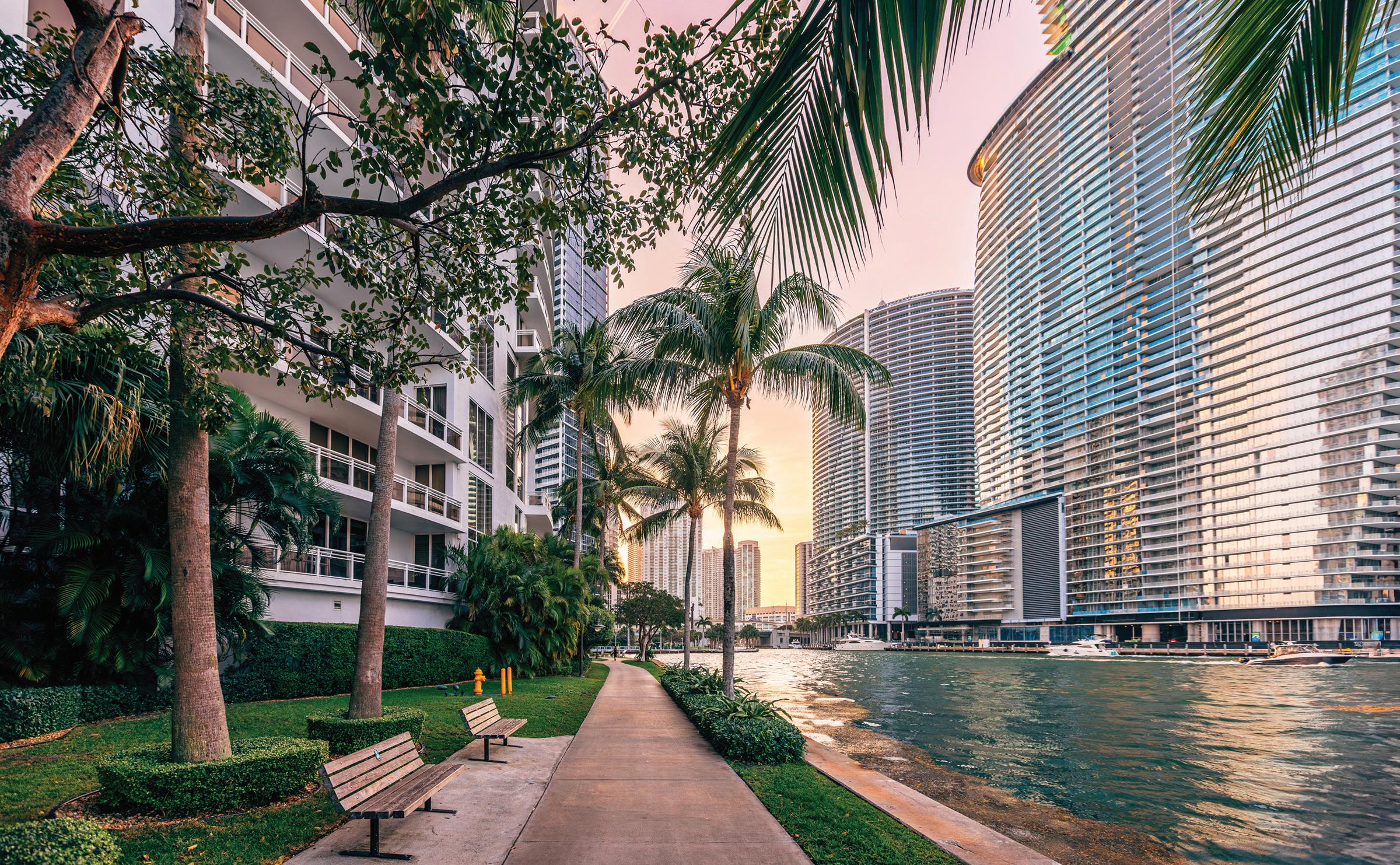
Homeowners are no longer just weathering storms—they’re engineering their way through them. From elevated Atlantic havens to Malibu mansions constructed with fire-resistant concrete forms, the high-end real estate market is driving a construction revolution. As climate threats intensify, affluent buyers are investing in everything from whole-house generators and solar battery walls to ember-detection systems and ventless eaves, all without sacrificing style.
Demographic shifts and extreme weather are transforming properties along the mid-Atlantic coast. Once strictly a summer destination, the coastal region nicknamed “Hurricane Alley” has seen an uptick of yearround residents. “Younger people and remote workers are making our beach communities their permanent residences,” said Jeff Sweyer, owner of Berkshire Hathaway HomeServices
Many beautiful homes in Florida are fortified bunkers designed to withstand Category 5 winds, according to Ron Shuffield, Berkshire Hathaway HomeServices EWM Realty.





















Increasingly all-cash buyers, or legacy property owners who don’t need mortgages, are electing to forgo standard property insurance and repurpose financial resources toward weatherproofing or extreme-weather funds, in a riskmanagement strategy known as self-insurance.






mortgage payments. “If you pay a hefty premium for 10 years and you don’t have a storm, then you’ve given the insurance company hundreds of thousands of dollars,” said Ron Shuffield, president of Berkshire Hathaway HomeServices EWM Realty, who noted that about 50% of the homes he sells are allcash deals.



Insurance premiums are rising at a staggering rate. “You know, $300,000 for an annual premium is not unheard of right now,” explained Brent Consedine, president of Berkshire Hathaway HomeServices California Properties in San Diego, California. “What was absurd three years ago is now becoming commonplace.”
While insurance is required in order to get a mortgage, all-cash buyers are increasingly opting to invest what would be the cost of yearly premiums into whole-house resiliency upgrades or dedicated savings accounts to cover repairs after an inevitable storm.
The financial logic is compelling in places where premium costs rival





viable option, but they are also aware they are often underinsured by traditional policies,” said Consedine. Where insurance is available, some wealthy homeowners are choosing a middle path, purchasing a minimal plan, and making the conscious decision to self-insure for the rest.


Premiums and deductibles are becoming so high in some coastal regions, that self-insuring a home can be more cost-effective in the long term, as long as risks are managed appropriately. “More people, particularly in the luxury market, are self-insuring,” noted Jeff Sweyer, president and owner of Berkshire Hathaway HomeServices Carolina Premier Properties. The trend is particularly pronounced among ultra-high-net-worth individuals who have the financial capacity to absorb potential losses.
In many California regions that are high-risk zones, traditional coverage is increasingly limited. “Most luxury home buyers do not consider self-insurance as a
$300,000 for an annual premium is not unheard of right now...What was absurd three years ago is now becoming commonplace.”
Brent Consedine Berkshire Hathaway HomeServices
California Properties




Some combine limited coverage through California’s Fair Plan—which caps at $3 million—with substantial self-insurance for property values above that threshold.
The shift toward minimal or self-funded insurance is driving unprecedented investment in property hardening. In California, homeowners are incorporating fire-resistant materials, defensible landscaping, and advanced building techniques as insurance substitutes as well as hiring private firefighting services. In hurricaneprone areas like the Carolinas and Florida, luxury homes are being built with wind- and water-resistant features and flood-proofing. This creates a paradox: Properties become more resilient precisely because owners don’t want to pay for traditional coverage.
Betting on their own risk management may prove more economical than paying increasingly prohibitive premiums to insurance companies that are grappling with climate change’s mounting costs.•

Carolina Premier Properties. “Today the beach communities are bustling all year long.”
The region’s growing popularity is colliding head-on with the reality of extreme weather, which is driving construction innovations from foundations to roofs. It’s become standard to raise homes, outbuildings, and even pools above the flood plain, and traditional wood pilings are being swapped out for more resilient materials. “Almost 90% of pilings are now made of concrete or steel,” said Whitney Leonard, president of Berkshire Hathaway HomeServices Carolina Premier Properties. “And in larger luxury homes the piling width has increased.”
Ground floors often incorporate water-resistant Sheetrock, and flood vents that encourage water to rapidly drain away from structures are now mandatory. “Many high-end properties are incorporating water-infiltration systems under homes, as well as French drains and trenches around structures,” Leonard noted. Impact-resistant windows with laminated glass and plastic interlayers are mandated by the North Carolina building code, eliminating the need for traditional shutters while withstanding winds of 157 miles per hour.
Roofs represent one of the most dramatic evolutions in construction techniques—one accelerated by Hurricane Florence in 2018. “Florence wasn’t just a storm; it was
an unprecedented rain event that stayed in the region dumping water for days,” Sweyer explained. “It caused tremendous damage, leading to a huge trend in roof replacements.” Now, to meet certification requirements, roof structures require layers of fortification. Most high-end beach properties also now include whole-house generators capable of running for at least a week.
The mounting expense of property upgrades is spurring tear-downs, he added. “It’s as effective to knock down old construction and build something new rather than retrofit things.” The two most expensive properties recently sold at North Carolina’s Wrightsville Beach— each at a price point of around $10 million—were torn down, Sweyer said.
Nearly 70% of Berkshire Hathaway HomeServices network members who were surveyed said clients want more customization in their homes now compared with years past.
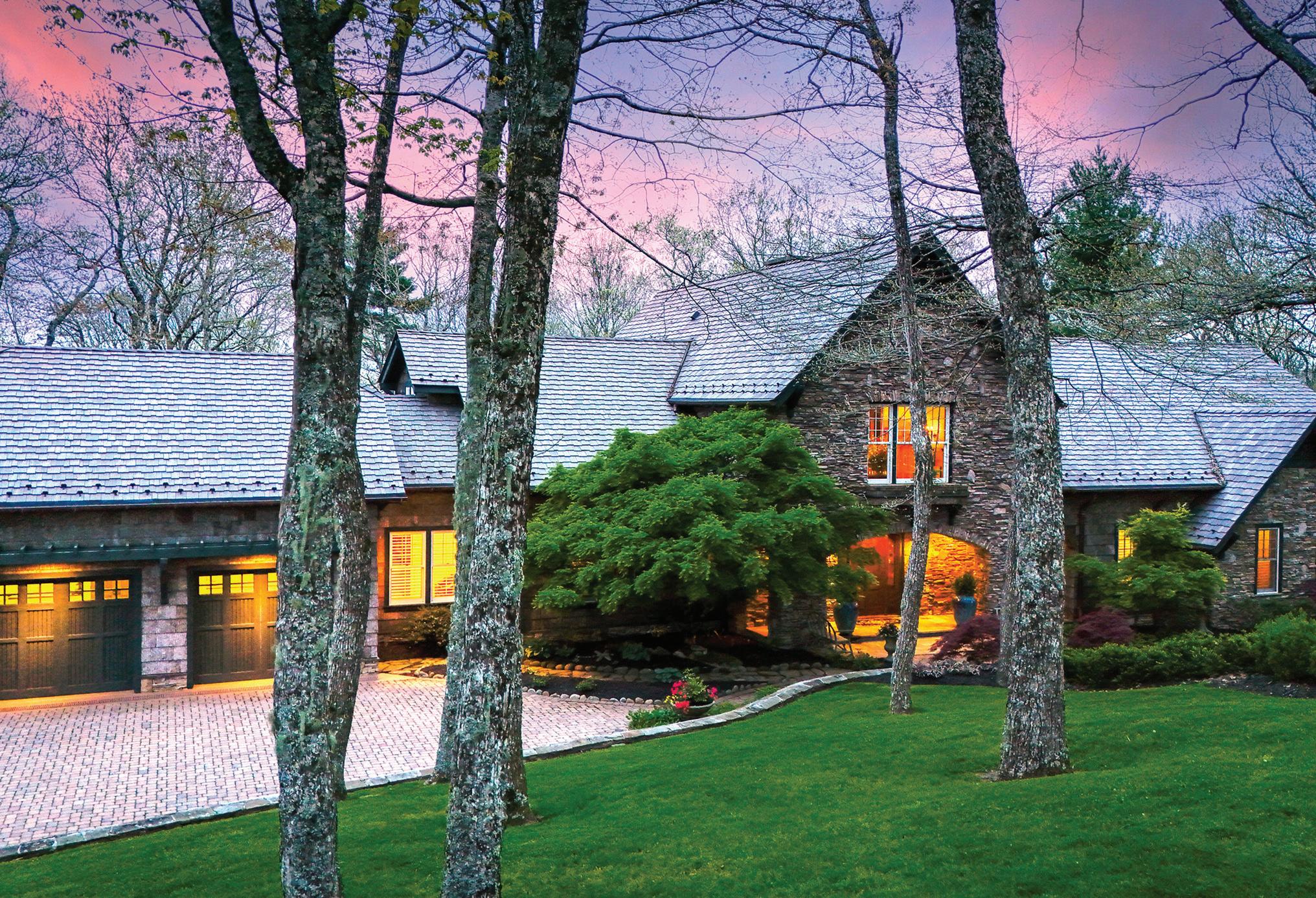
Ron Shuffield, CEO and president of Berkshire Hathaway EWM Realty in Miami, sees similar building innovations throughout South Florida. Shuffield credits Hurricane Andrew as the regional wake-up call. The 1992 storm brought stricter building codes that now require reinforced roofs, impact-resistant windows, and triple-locking doors. “Most every luxury home in South Florida is now a concrete structure,” Shuffield explains. “Underneath all the beautiful facades is a fortified bunker designed to withstand Category 5 winds.”
Roofing innovations include “peel and stick” moisture-repellent systems—heavy adhesive membranes that create waterproof barriers on plywood roof decking and prevent water infiltration even when roof tiles are lost. Combined with reinforced trusses strapped directly to concrete walls, these systems prevent the liftoff effect of hurricane winds raising entire roofs.
Luxury homeowners are also incorporating sophisticated home security systems, which can detect hazardous debris and potential property damage; plus, if they end up having to leave their homes, the systems can detect intruders as well.
Neighborhood-funded seawalls and elevated highways are rising throughout South Florida. In densely populated cities like Miami, infrastructure improvements are often mandated, with costs shared by neighbors. These costs are substantial but the investment value often justifies the expense, particularly as property values rise dramatically.
The team at Berkshire Hathaway HomeServices California Properties has watched fire seasons lengthen and wildfire events intensify in real time. This past January, they were directly impacted by the fires in Pacific Palisades and Altadena. “Our Pacific Palisades brokerage and escrow office burned down” and many employees lost their
homes, said Brent Consedine, president of Berkshire Hathaway HomeServices California Properties. “That’s not to mention the thousands of properties that were destroyed.”
This reality of year-round fire danger is driving fundamental change in the luxury home market. “It’s become a way of life,” Consedine said. The crisis is pushing California to the forefront of building resilience technology, with luxury homeowners taking a proactive approach with landscape designers and architects.
New constructions often utilize Insulated Concrete Forms (ICFs)—interlocking foam blocks filled with reinforced concrete that create fire-resistant walls. Stucco and passive-design features are seeing a resurgence due to their fire-resistance. “One Pacific Palisades home withstood the fire in the neighborhood significantly better than some of the neighboring homes,” said Berkshire Hathaway HomeServices California Properties green building expert and sales associate Dayna Campbell, “partially due to incorporating passive-design principles.”
Cutting-edge, fire-resistant materials, such as fiberglass windows with noncombustible frames, metal roofing, and fiberglass and aluminum doors are proving to be worth the investment costs.
Owners of older homes are retrofitting for fire protection, too. Ventless, gutterless eaves, which prevent windblown embers from entering attic spaces, are a critical bulwark protecting homes. “Wind-blown embers enter through vents and eaves, and they end up in the attic, where combustible material ignites,” Consedine said.
Smart-home technology is becoming standard for both convenience and safety. Homeowners are investing in Wi-Fi-enabled ember detection and interior sprinkler systems, as well as solar technology, generators, and pump systems to create homes that can function independently during emergencies.
Site assessments and coordination between fire consultants and landscape designers ensure homes meet wildfire regulations while preserving visual appeal. Sophisticated landscape designs that incorporate defensible space, hardscaping, and noncombustible decking and fencing are now standard. “Luxury clients are embracing zoned landscape design that balances aesthetic beauty with safety—using gravel paths, stone terraces, and low-flammability plants like succulents,” said Jill Swartz-King, an agent and natural hazard expert at Berkshire Hathaway HomeServices California Properties.
The devastating fires have paradoxically created unprecedented opportunities for innovation and improvement. Homeowners are now embracing comprehensive approaches to resilience that extend far beyond basic fire protection. Luxury clients are moving well beyond California’s solar-mandate requirements, maximizing their roof space and the amount of energy they can generate. When paired with comprehensive energy storage—like a backup battery wall—homeowners are meeting and even exceeding their energy needs. “The beauty lies in the combination of a variety of items all working in tandem to really make an impact,” Campbell said.•
Insurance issues
Buyers seem to have accepted the higher insurance rates, according to Berkshire Hathaway HomeServices network members. Source: Berkshire Hathaway HomeServices 2025
Has insurance become a bigger sticking point for buyers?
Luxury clients are embracing zoned landscape design that balances aesthetic beauty with safety— using gravel paths, stone terraces, and low-flammability plants like succulents.”
Jill Swartz-King Berkshire Hathaway HomeServices California Properties

When city dwellers start looking for more space and a calmer pace of life, they have plenty of options. But what makes a suburb not just livable, but exceptional?
From commute times to the best retail experience, here’s what Berkshire Hathaway HomeServices network agents across four fast-growing U.S. metros say their luxury clients are looking for.
Commute sweet spot: Under 30 minutes door to door
Long enough to decompress, short enough to reclaim your evening—the ideal commute is somewhere under 30 minutes.
On the East Coast, for one, historic suburbs are often well-served by commuter rail lines, said George Patsio, founder of Boston-based Berkshire Hathaway HomeServices
Commonwealth Real Estate. But you’ll pay more to live near them.
Those who travel for work may also want to consider a suburb close to the airport.
At the same time, many suburbs are themselves becoming employment hot spots, said Melanie Weidenbach, president and CEO at Berkshire Hathaway HomeServices Northwest Real Estate. Tempe, outside Phoenix, and Bellevue, outside Seattle, for example, have become major tech hubs.
The housing mix: Modern meets manageable
The ideal suburb blends single-family homes with upscale townhouses and mid-rise condos, said Troy Reierson, CEO of Berkshire Hathaway HomeServices of Arizona Properties, California Properties, and Nevada Properties.
Scottsdale, Arizona, offers diverse home options, with a number of master-planned communities, single-family estates, condos, and townhomes.
Scottsdale, for one, features a number of master-planned communities, with single-family estates, condos, and townhomes, Reierson said.
“It makes these neighborhoods attractive to [almost] anyone in the luxury end,” he said.
Mixed-used neighborhoods are also rising in popularity in Atlanta where affluent buyers “don’t want the single freestanding mansion that demands so much upkeep,” according to DeAnn Golden, president and CEO of Berkshire Hathaway HomeServices Georgia Properties. “They want to be in these elegant, mixed-use developments very close to restaurants and quaint downtowns.”
Plenty of amenities and recreation: Parks, pools, pickleball
The best suburbs offer plenty of space to play—whether that’s a country club and golf course, pickleball courts, or nearby trails for post-work strolls with the family.
“Sports and recreation is something that all generations can enjoy,” Golden said.
In Phoenix, the weather means golfing is possible nearly all year round. In the rolling countryside hills outside Atlanta, you’ll find equestrian amenities. And in Chicago’s Evanston, you’ll find bike
trails, brewpubs, and a lakefront worth the premium, said Aaron Starck, CEO of Berkshire Hathaway HomeServices Starck Real Estate.
“It just depends on the buyer’s ‘after five.’ You know, the vibe that they’re seeking to really live out their life,” Golden added.
Proximity to nature: Beautiful surroundings are key
The ideal suburb doesn’t only have built-up parks—it’s also close to natural beauty. In Phoenix, many neighborhoods are a short drive from mountainous desert hiking trails. In Atlanta, go north for the Chattahoochee River National Recreation Area, ideal for sunset kayaking and bird-watching. And in Seattle, the northwest suburbs combine views of the Olympic Mountains with access to parks along the Puget Sound, while to the east, Issaquah, nestled near the Cascade foothills, offers easy access to hiking on Tiger Mountain.
Excellent schools: Top-rated public schools, with private options nearby
For suburban buyers with families, there’s perhaps nothing that matters more than their children’s education. “Schools are always something on the affluent buyer’s mind,” Golden said. Among the areas that routinely top the charts for schools are: Lincolnshire and Naperville outside Chicago (Naperville was named the best place to live in the U.S. for the second year in a row by Niche.com, a website that ranks schools and neighborhooods); Bellevue and Lake Washington near Seattle; Scottsdale and Ahwatukee in Phoenix; and North Fulton, Milton, and Alpharetta in Atlanta.
Elevated retail destinations: A day out for the whole family
In a survey of Berkshire Hathaway HomeServices network agents, nearly 37% of respondents said shops and restaurants are the most important factors attracting buyers to certain suburbs, eclipsing all others.
The biggest draw: open-air, accessible shopping areas that offer more than just retail alone. At the Scottsdale Quarter outside Phoenix or Kirkland Urban outside of Seattle, for example, shoppers can stop by the salon for a blow out, hit a yoga class, or let their kids play in a nearby splash fountain in between stores. Steakhouses and salad spots offer lots of options for dining.
A community feel: Where everyone knows your name
Many buyers find that, once they choose a suburb, they tend to stay there for quite some time.
“We as real estate agents bring people through the doors to the house, but once they’re in it they make it their home,” Golden said. “Often they stay for the community and the sense of belonging.”
Many suburban communities are also intentionally designed to bring neighbors together in parks, town centers, and other gathering spaces.
“Each community has built a sense of belonging that radiates people’s pride about where they’re raising their families and building their lives,” Golden said.•
Peak suburbia
According to a survey of Berkshire Hathaway HomeServices network members, the following factors are top of mind among suburban buyers.
In our survey, 38.9% percent of network members (the largest group) said amenities like shops and restaurants were the number 1 factor for buyers; 11.1% said highranked schools reign supreme; 11.1% said walkability does; 8.3% said housing stock is most important and 8.3% said commute time is. In the ‟other” category, network members pointed to the importance of healthcare access, strong public schools, and a sense of community, among other factors.

Luxury home-dwellers today want ease and coziness. They also want customization, but not enough to limit their home’s resale value. On top of that, they’d really like to host pickleball parties on a whim, and to bring as much of a spa feel as possible into their living spaces. And don’t forget nature, either. Buyers are looking to shed the barriers between inside and out, and instead commune with the environment from the comfort of their living room.
Yes, the whole “home as everything” idea that became popular a few years ago keeps expanding. Homeowners want to feel entertained, soothed and holistically centered. This might sound like a tall order, but it’s all doable with proper planning and design.
Here are the biggest trends right now:
The concept of walking into a home with everything laid out for you is here to stay. “People want to be able to move and be ready to enjoy their space without having to deal with upgrades, especially in the luxury market,” said Emily Clark, president of Berkshire Hathaway HomeServices Robert Paul Properties, who focuses on Cape Cod and the Islands, as well as Boston. “It’s the expectation at this point.”
Customization, without going wild
According to our survey of Berkshire Hathaway HomeServices network agents, the vast majority (nearly 64%) said they find people want more customization now than in years past. When it comes to personalization, buyers might add a wine cellar or special paneling, but they’re keeping it resellable. “When you’re spending this much money, you want it to feel like yours,” said Rachel Bradley, Luxury Collection Specialist with Berkshire Hathaway HomeServices Hawai’i Realty. Bradley said she and her husband just renovated a luxury home for personal use. “We think it’s our forever home. But we did still think, would somebody else want this if we ever go down the road? Every home buyer and seller is thinking about not going too far.”
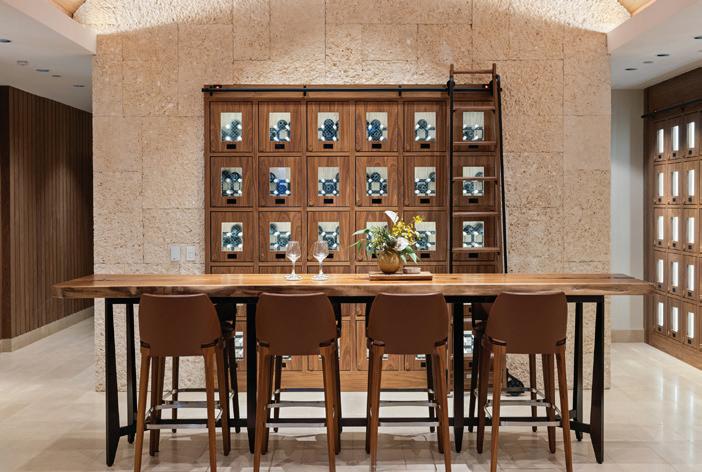
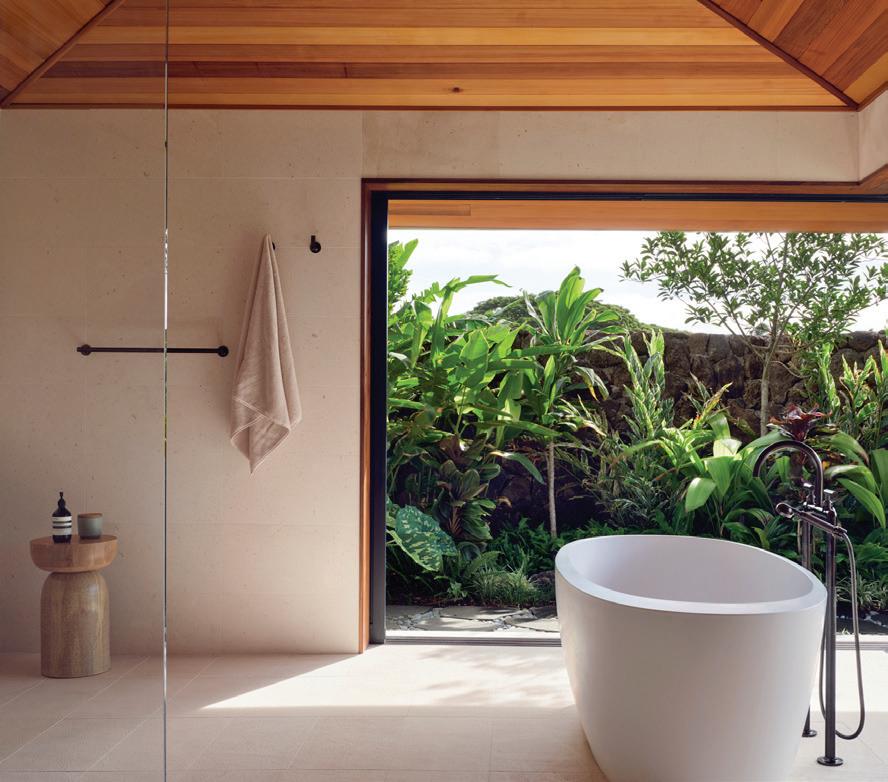
Homeowners are increasingly replacing their tennis courts with pickleball courts, due to the huge interest in the sport these past few years. “Pickleball continues to blow up, so you’re seeing that driving design,” said Kim.
Connection to nature with a warm, soft feel
Buyers are seeking limestone floors, wood, and other natural touches. “The biggest shift with the new build is, how can I bring that outdoors into my indoor living space?” said Wild. People are pulling that off by installing nano doors, which are nearly all-glass and show off the natural surroundings, as well as by using natural elements, such as high-end woods and stone flooring, she said.
Spa feel
The continuing wellness trend is turning homes into private spas, with hot and cold plunges, dedicated space for an aesthetician, and yoga studios. People want to make sure they have spa treatments available to them at home, said Clark. “Infrared saunas are a big thing that we’re seeing a lot these days plus boutique-style gym meditation spaces and dedication wellness suites,” she noted.
And while wellness might seem like a trend that the younger generation started, Kalama Kim, president at Berkshire Hathaway HomeServices Hawai’i Realty, noted that a growing older segment is absolutely contributing to it and keeping it going. “The population is aging, so when you add the wealthier older people, and coming off Covid, it makes a lot of sense that you’re seeing the wellness focus,” he said. “They have the money to spend on it, and they care about wellness.”
And buyers are putting in those courts wherever they’ll fit. “I was in a luxury home in Utah on top of a mountain, and falling off each side of it, there was a pickleball court. It was so important that they had to put it there,” said Brenda Wild, broker and owner of Berkshire Hathaway HomeServices Signature Properties in Aspen. “People have Sunday afternoon pickleball tournaments at their house, or they have pickleball parties.”
When she and her husband renovated a luxury home for personal use, Bradley said they wanted it to feel like nature, with additional softness. “We really worked on how to make spaces feel welcoming and cozy, down to the pillows and the throws,” she said. “A lot of it is neutrals creating that cozy feeling. That’s kind of leftover from Covid, that’s our nest, and we’re here to stay.”•
